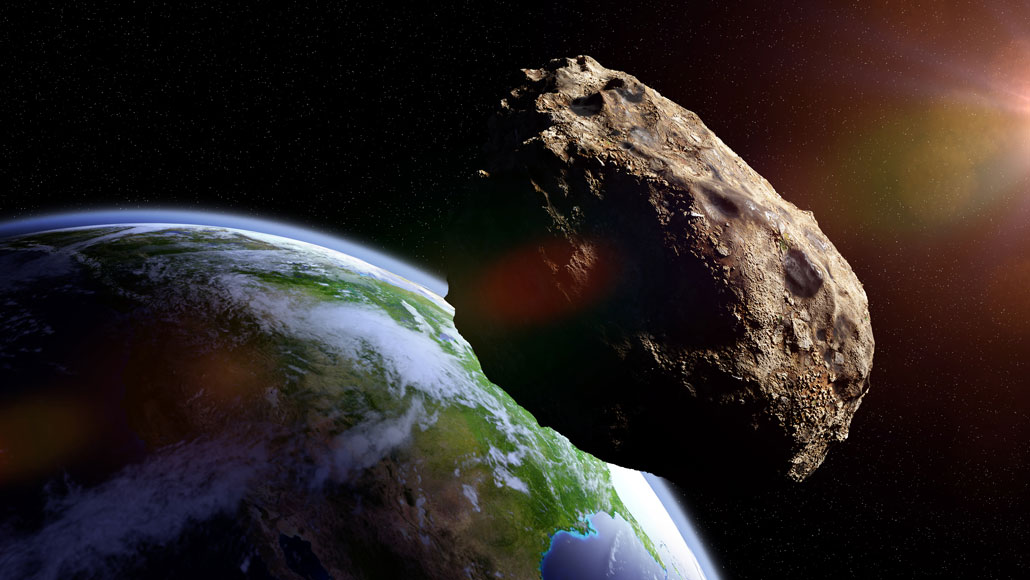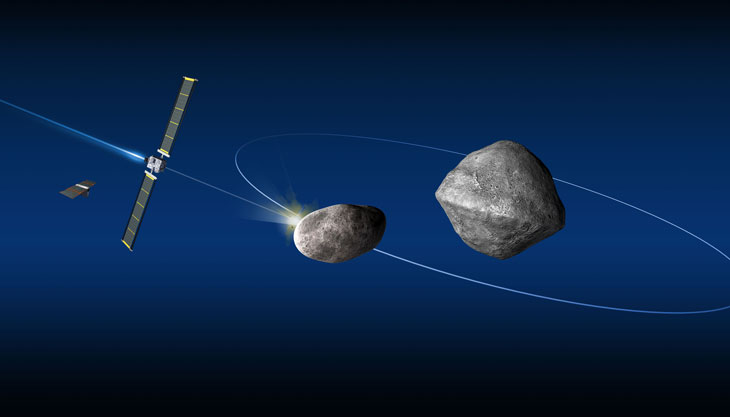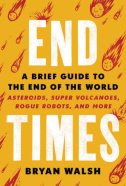‘End Times’ explores the catastrophic events that could kill us all
A new book looks at how to prevent asteroid strikes, climate change and other threats

If a massive asteroid (like the one illustrated) struck Earth, the aftermath could plausibly lead to human extinction. But there are ways to minimize that risk, a journalist argues.
dottedhippo/iStock/Getty Images Plus
End Times
Bryan Walsh
Hachette Books, $29
Imagine if an asteroid as long as Central Park struck New York City. The impact would wipe out the city’s population, and the effects of the energy released — thousands of times more energy than was unleashed by the nuclear bomb dropped on Hiroshima, Japan — would be felt globally. Thermal radiation would start fires around the world, boiling the oceans and kicking off a rapid change in climate that would probably kill off hundreds of species, humans included (SN: 4/27/19, p. 10).
That might sound like the setup for a Hollywood disaster movie, but it’s not total fiction. A similar scenario played out about 66 million years ago when an asteroid is believed to have hit the Yucatán Peninsula and devastated the dinosaurs.
The probability of such a big asteroid hitting Earth in any given year is a very small 0.000005 percent. But that’s no reason not to take the threat seriously, given the catastrophic consequences, science journalist Bryan Walsh persuasively argues in his new book, End Times.
Walsh believes an asteroid hurtling toward Earth, supervolcanoes, nuclear war, human-caused climate change, disease epidemics and bioengineered pathogens are among the greatest risks facing the future of humankind. These existential threats, he writes, are “the disasters that could end the human story in midsentence.” But we could eliminate or minimize those threats now, he argues.
Sign up for our newsletter
We summarize the week's scientific breakthroughs every Thursday.
In each chapter, Walsh investigates a different risk. He visits scientists in their labs, reviews research studies and pulls from his reporting experiences as a writer and editor at Time magazine to put each threat in context, including what scientists are doing to combat the danger.
To understand asteroids, he spends a night at Mount Lemmon Observatory in Tucson, Ariz., where astronomers are tracking space rocks that might intersect with Earth’s orbit. In theory, there are ways to deflect an incoming asteroid before it slams into Earth, such as trying to change the asteroid’s speed or approach. Walsh suggests that countries with space programs spend more on planetary defense and start practicing asteroid deflection. NASA and the European Space Agency have plans to do just that: In 2022, they intend to crash a spacecraft into an asteroid to try to alter its trajectory.

Describing such plans to counter extinction threats is what makes End Times stand out. It’s not just another doomsday book. Walsh offers insight into some options that are within reach, such as carbon-capture technology to pull carbon dioxide out of the air to curb the effects of climate change (SN: 12/22/18 & 1/5/19, p. 18).
He also discusses more theoretical solutions that scientists have thought up, like how to cool magma beneath a supervolcano to prevent an eruption. Drilling nearly 10 kilometers into the belly of a supervolcano to inject cold water may not really be practical and could cost about $3.5 billion. But offering solutions that seem fantastical is still important, Walsh argues, “because doing so demands that we step outside our brief human time frame.” Thinking big about how we could protect the future of our species might lead to more feasible plans of action.
End Times isn’t all doom and gloom. Walsh adds some lightness to otherwise grim visions of humankind’s future by sprinkling in humor and colorful anecdotes throughout the book, like a story about his visit to an insect food fair. He learned how eating bugs could be a viable food option if a small group of humans were to survive a catastrophic event. “It might actually take the end of the world for me to eat the tarantula tempura, a battered, fist-sized arachnid on a plate that I can still see in my nightmares,” he writes.
Ultimately, End Times serves as a wake-up call, letting people know that “we’re not helpless in the face of those threats,” Walsh writes. “Whether we endure or die will come down chiefly to our own decisions.” Let’s hope we make the right ones.
Buy End Times from Amazon.com. Science News is a participant in the Amazon Services LLC Associates Program. Please see our FAQ for more details.








